Distinctively prickly with pink or purple flowers, thistles belong to the largest family of flowering plant in the UK (with the exception of the grasses) – Asteraceae. These common plants are found throughout Britain and Ireland, providing key services for invertebrates who seek safety in the sharp spines. The leaves and nectar of thistles are also excellent sources of food for other groups, including pollinators and Painted Lady caterpillars, and several bird species are known to eat the seeds.
Here we take a look at a selection of thistles found throughout the UK, highlighting their distribution and ways in which they may be identified.
Creeping Thistle (Cirsium arvense)
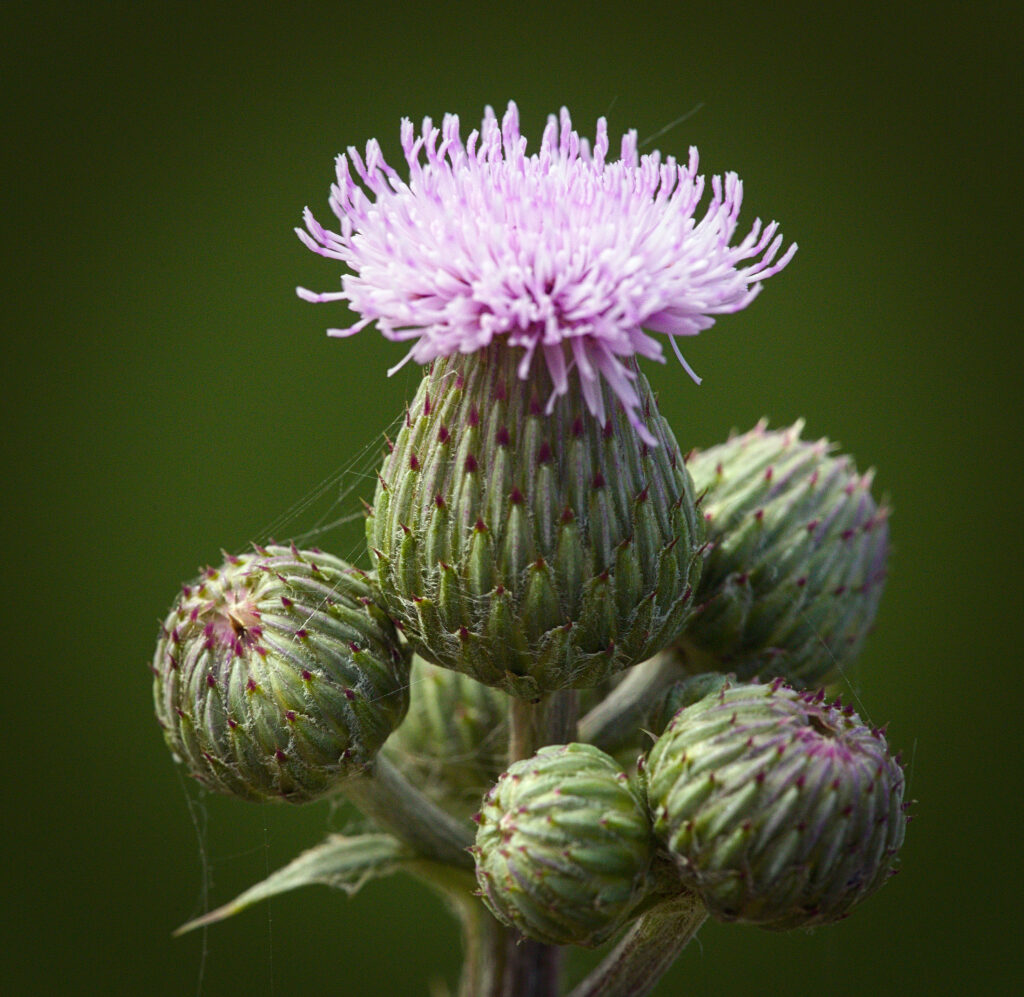
ID Notes: This perennial flower is named for its far-reaching, creeping roots. The leaves are smooth and grey-green in colour, with wavy, spined edges. The stems are smooth, neither spined nor winged. The flowerheads produce small, pale pink flowers (1.5–2.5cm) in small clusters with pear-shaped bases covered with phyllaries pressed against the flowerhead, curving outwards.
Distribution: Widespread and common throughout Britain and Ireland. Creeping Thistles can be found from June to October on rough grassland, roadside verges and field edges – a preference for disturbed and cultivated ground is observed in this species.
Spear Thistle (Cirsium vulgare)
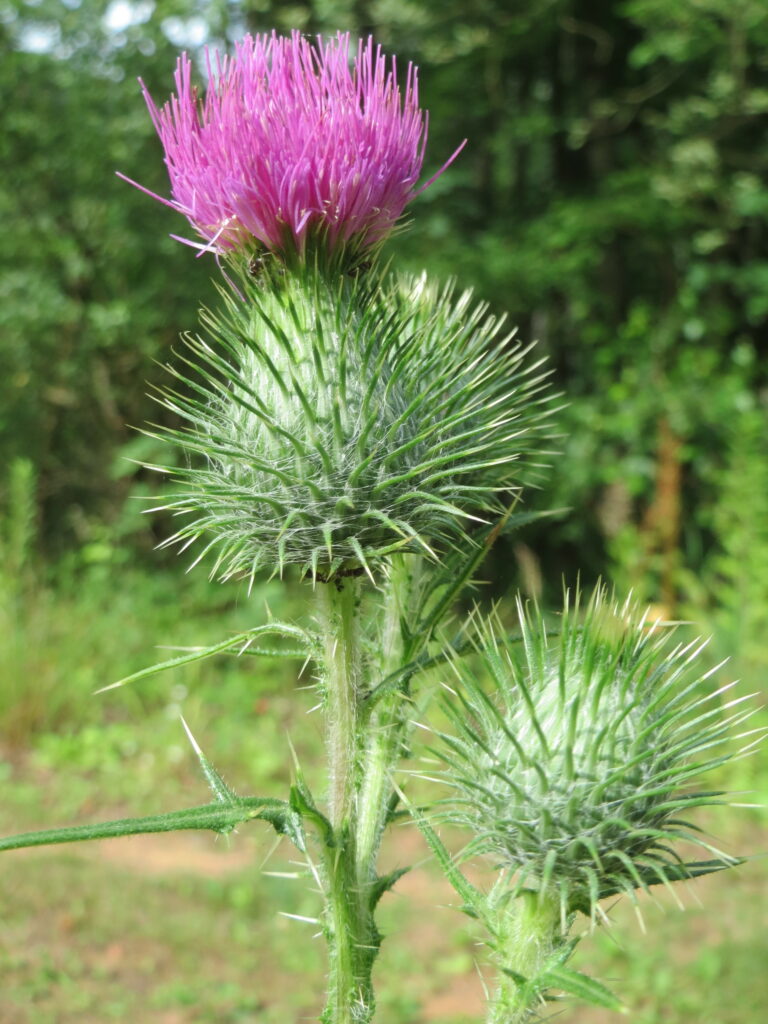
ID Notes: This thistle is particularly attractive to pollinators, who are often seen feasting on the deep pink flowers. The large flowerheads (up to three may be present per stem) sit on a bulbous, spiked base with long, spreading phyllaries. The leaves of a Spear Thistle have long, lanceolate segments tipped with spines, and the upper surface is bristly. The stem is covered with light hair and sporadic spiny wings.
Distribution: Widespread and common throughout Britain and Ireland. It can be found from July to October on disturbed ground such as roadside verges, field edges and pastures.
Welted Thistle (Carduus crispus)
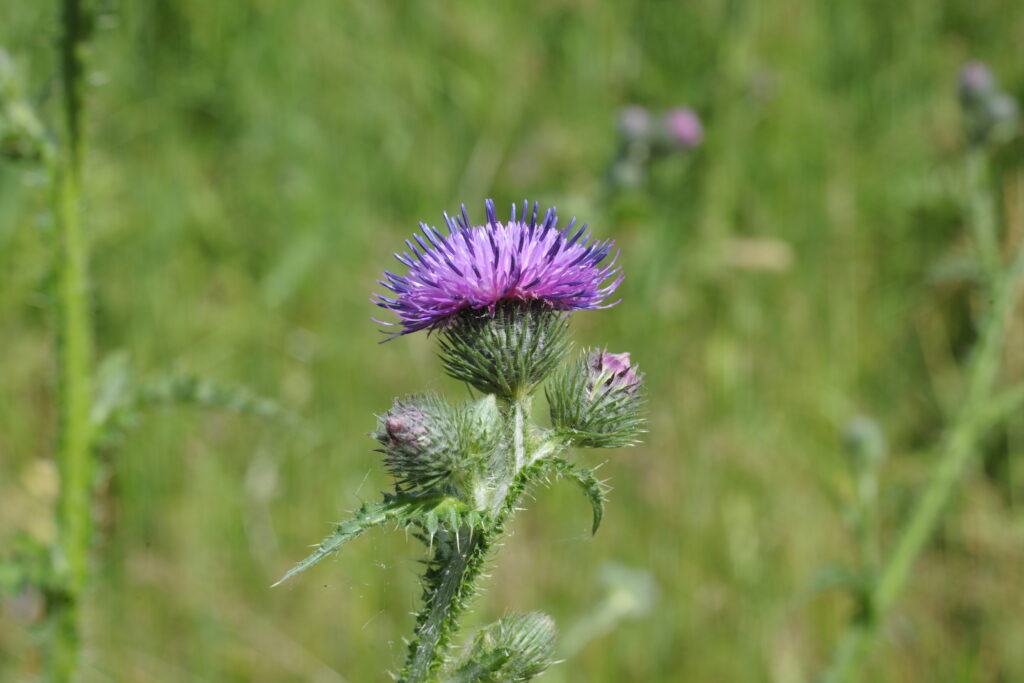
ID Notes: This plant has small, red-purple flowerheads that are clustered together. The base of the flower head has spiny, protruding bracts and the phyllaries project outwards. The branched stems have several rows of spiny wings, and the leaves have broader lobes than is typical for other thistles, with spiny margins.
Distribution: Widespread throughout Britain, except Ireland. This species shows a preference for nutrient-enriched substrates, including brownfields, field margins, meadows and beside streams.
Marsh Thistle (Cirsium palustre)
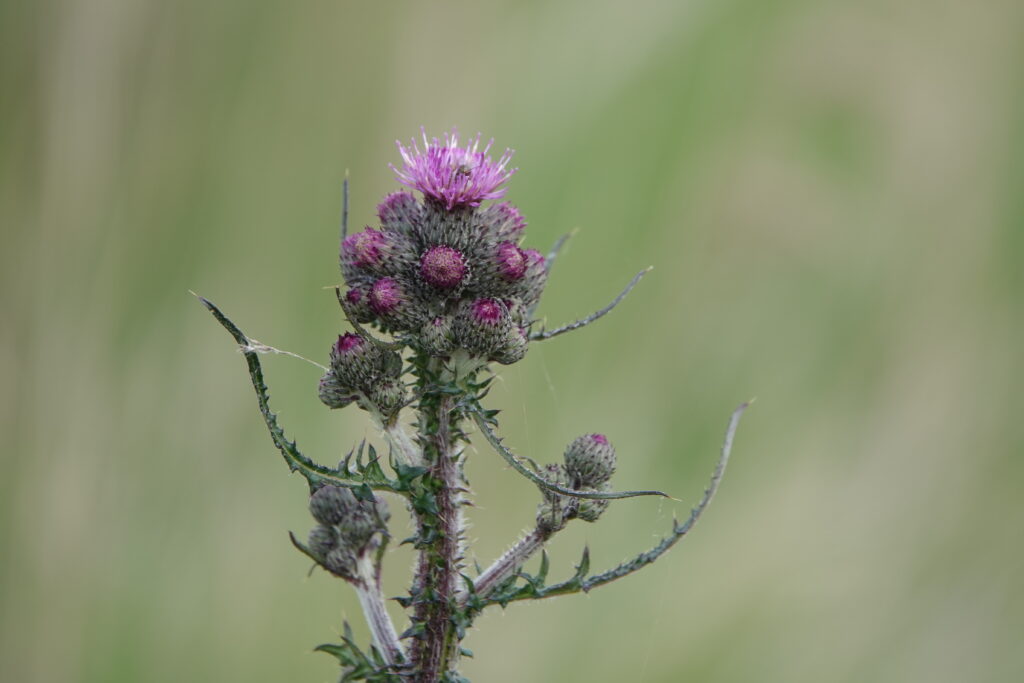
ID Notes: Growing up to 2m in height, this large thistle is easily identified by its purple tinge. The flowerheads are small and are found in large clusters, with small reddish-purple or white flowers and the phyllaries are pressed against the flower head, with tips facing downwards. Leaves are more slender and shorter, with hair visible on the upper surface, they are often tinged purple on the margins and have many spines.
Distribution: Widespread throughout Britain and Ireland, and can be found in marshes, damp grassland and meadows.
Meadow Thistle (Cirsium dissectum)

ID Notes: Each Meadow Thistle has one flower head on a cottony stem, growing up to 80cm tall – the solitary flower has purple-tipped, long bracts and the base covered with light, white hair. The stems are not winged, and basal leaves are toothed in a rosette formation. The remaining leaves are finely toothed, without spines, and have light hair on top, with a white, cottony appearance underneath.
Distribution: Most common in the south of the UK, with strongholds in the south-west and south Wales. Meadow Thistles are scarce towards the north. They can be found in bogs, fens, grassland and meadows.
Musk Thistle (Carduus nutans)
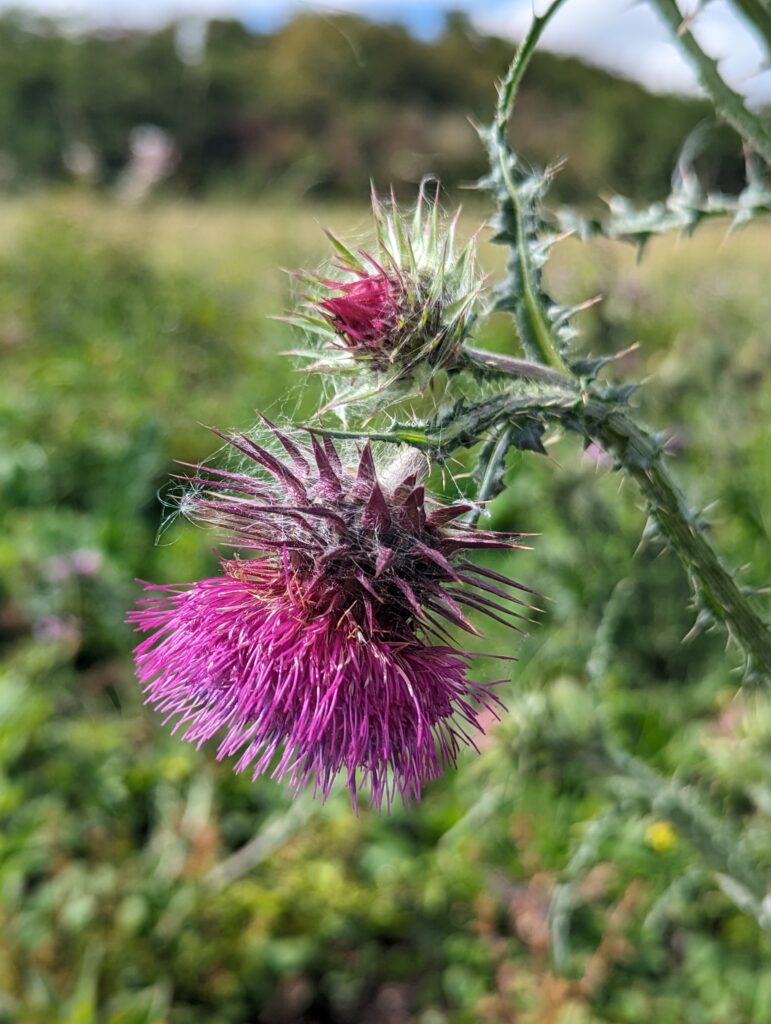
ID Notes: Growing up to 2m in height, the Musk Thistle is recognised for its greyish-green colour. The flowerheads are large (3–5cm across), often nodding to one side after maturity, and have long, spiny phyllaries and two-lipped petals. The leaves are short and twisted, with spines present on the toothy lobes and are often woolly underneath.
Distribution: Widespread throughout Britain, but absent from Scotland and Ireland. Most commonly found on calcareous soil from May to September.
Woolly Thistle (Cirsium eriophorum)
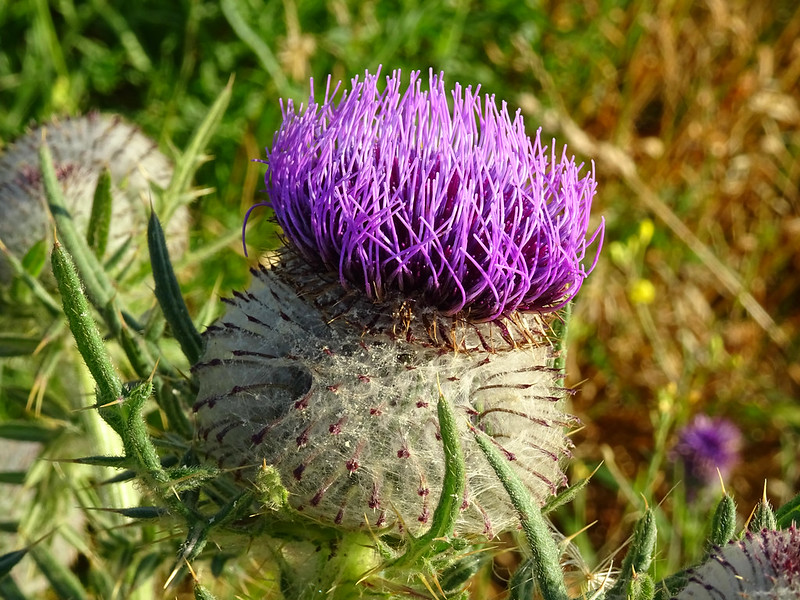
ID Notes: The Woolly Thistle gets its name from its wool-like covering. The leaves are ladder-like and narrow, tipped with spines and are white underneath. The stems are wingless and are covered in cobweb-like hairs, producing a single large flowerhead. The phyllaries on the flower base are downward curved, spread throughout the cobwebbing.
Distribution: Widespread throughout Britain, with strongholds in the Yorkshire Wolds and the Isle of Wight. The ‘queen of thistles’ often prefers chalky soils.

